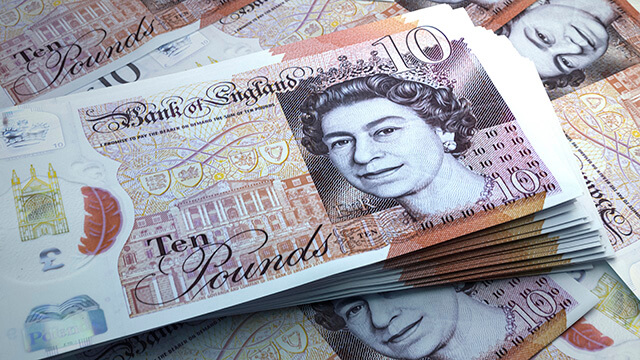
 02/09/25
02/09/25
 667
667
Pound Dives Below 1.3400 Amid Skyrocketing Gilt Yields
The Pound Sterling experienced a sharp decline against the US dollar during the European trading session, slipping below the 1.3400 level. The selloff in UK government bonds, particularly gilts, has exerted significant downward pressure on the currency. Yields on 30-year gilts climbed to their highest levels since 1998, reflecting growing investor concerns over the UK’s fiscal stability. The 10-year gilt yield also approached 4.8%, its highest point since May, increasing by over 1% in a single day. This surge in yields underscores fears of rising borrowing costs and potential fiscal challenges facing the UK government.
The currency’s weakness is further echoed in the EUR/GBP exchange rate, which trending higher by approximately 0.5% indicates a broad decline in the Pound relative to major currencies. The market’s outlook remains sensitive to upcoming economic data, notably the US Institute of Supply Management’s Manufacturing Purchasing Managers’ Index (PMI) for August, expected later in the day. Should the PMI’s preliminary estimate exceed expectations, it could bolster the US dollar. Conversely, a weaker-than-anticipated PMI, especially with a decline in employment subcomponents, could exert downward pressure on the dollar, providing the Pound with limited short-term respite.
Technical analysis suggests the pair is under bearish momentum, with the Relative Strength Index approaching oversold territory near 30. Immediate support levels are seen around 1.3390, aligned with the Fibonacci retracement, with further downside targets at 1.3330 and 1.3300 if momentum persists. Resistance levels are identified at 1.3440, 1.3460, and 1.3500, which could serve as potential ceilings if the Pound attempts a recovery.
Gilt yields, which significantly influence the pound’s valuation, depend on factors such as interest rates set by the Bank of England, inflation expectations, and overall economic health. Rising inflation tends to depress bond prices, pushing yields higher, while higher interest rates make newly issued gilts more attractive, further impacting existing bond prices and yields. The strong correlation between gilt yields and the Pound underscores the importance of monetary policy and fiscal outlooks in shaping currency movements.
 Back to the Blog Main Page
Back to the Blog Main Page














